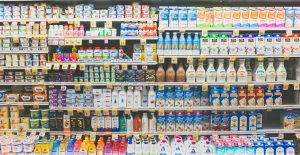
Labels are not just there to make your product look the part, they are also required for communicating with your customers and informing them of vital information about your products. If you are on the lookout for new labelling machinery, or considering contract labelling for your business, you need to know the type of labels you need. There are many types of labels to choose from, and some are more suitable to certain products than others.
1. POLYESTER LABELS
Polyester labels are a common option for a range of products because they are available in various shapes and sizes. A very common option for polyester labels is to use a chrome or metalized finish, and they are well suited for luxury products which need to look the part. Polyester labels benefit from very long-lasting adhesives, and they are commonly used for labels on equipment and machinery because of this.
2. RECYCLED LABELS
If sustainability is an important part of your business, then using recycled labels in your labelling machine might be your best option. As the name suggests, recycled labels are made from 100% recycled materials. A common material for this is Kraft paper, which offers a trendy, earthy appearance. These kinds of labels are not able to be laminated, so they do not work well for products which need to be oil or water resistant.
3. WRAPROUND LABELS
For cylindrical products, such as bottles and jars, wrapround labelling is a perfect solution. These labels work with your labelling machines in order to wrap fully around your product and cover the entire cylinder. Wrapround labels are great for showcasing your products while also providing enough space on the label for necessary information. This kind of label is commonly used for food and beverages, and provides space for ingredients lists and nutritional information.
4. FOLD OUT LABELS
When your product has limited space, but you need to provide your customers with a lot of information, fold out labels might be the ideal solution. They are made from a single substrate, and then folded and stacked into an accordion effect. Fold out labels are generally used in addition to a primary label. For example, you might have a primary label on the front of your product, and then a fold out label on the back or bottom.
5. DRY PEEL LABELS
Dry peel labels are designed to be peeled away from a product in order to remove it completely. For some products, you need a label fixed to it while in store, but customers need to be able to remove this post-purchase. These labels use a temporary adhesive to hold the label in place securely, but it can also be peeled off with ease.
To find out more about label types and advanced labelling systems, speak with our team of experts today.







